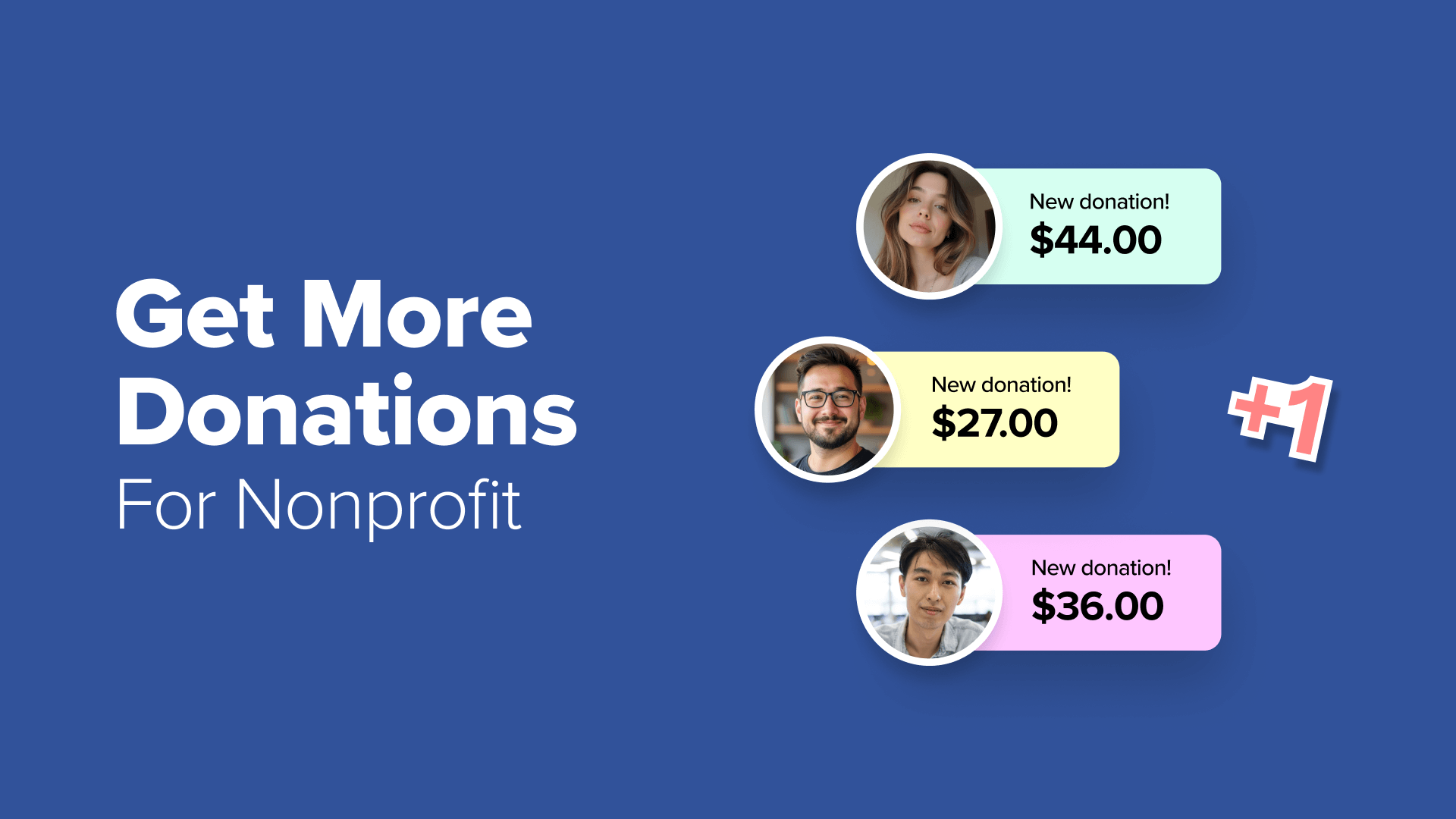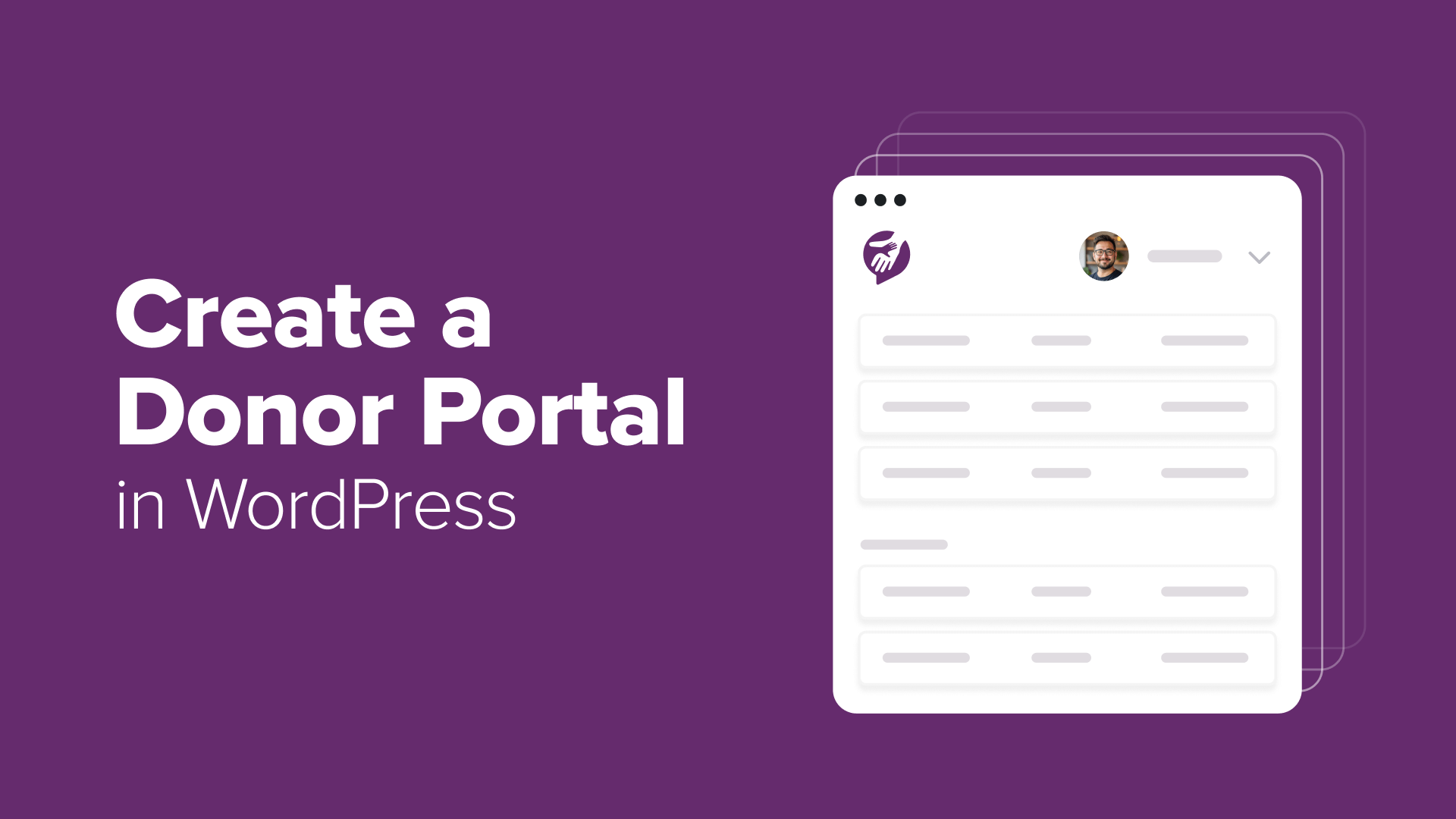Beginner’s Guide to WordPress Image Sizes (+ Best Practices)
Wondering what WordPress image sizes to use? In this beginner's guide, we will explain WordPress default image sizes and best practices to optimize your images.
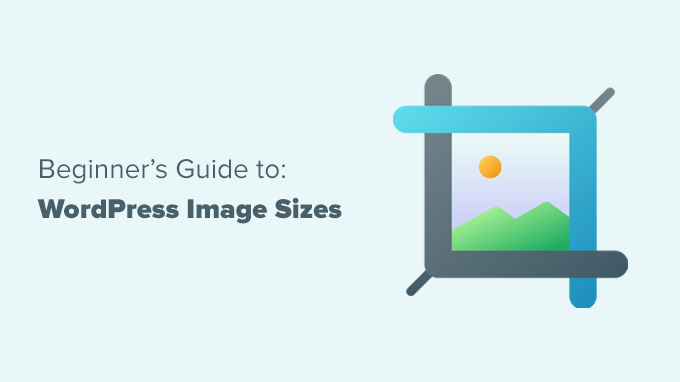
Table of Contents
- What Size Should My Images Be for My WordPress Site?
- What Image Sizes Should I Use in Blog Posts?
- What Image Sizes Should I Use for Featured Images?
- What Image Sizes Should I Use for Social Media?
- What Image Size Should I Use for My Website Logo in WordPress?
- Bonus Tip: Editing Images for Your WordPress Website
- Frequently Asked Questions About WordPress Image Sizes
- Additional Resources on WordPress Images
Every WordPress beginner understands this image dilemma: upload photos that are too small and they look blurry, upload them too large and your site becomes painfully slow.
At WPBeginner, we’ve worked on perfecting image sizes on our own blog, making sure they always look good and don’t slow down our page loading time.
Along the way, we’ve learned some simple ways to choose the best image sizes for a clean, professional look and a great user experience.
Getting this right has been a game-changer for our site’s overall appearance. 🎨
In this beginner’s guide, we’ll share everything about WordPress image sizes. You’ll learn the standard dimensions that work best, how to optimize images for different screen sizes, and the simple techniques that will make your website both beautiful and blazingly fast.
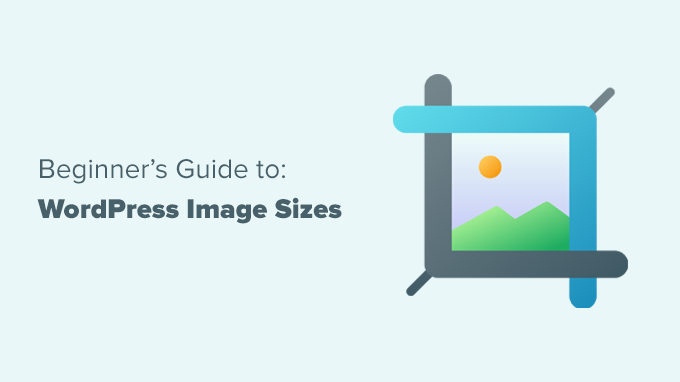
What Is an Image Size?
Image size usually refers to the width and height of an image measured in pixels. For example, 1600×900 pixels means an image is 1600 pixels wide and 900 pixels in height. These measurements are also called image dimensions.
Basically, an image with larger dimensions has more pixels, which will increase the image file size.
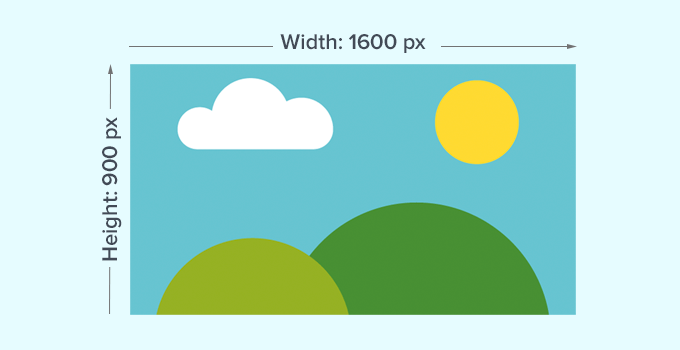
Image file size is the space an image file occupies on a computer, and it’s measured in bytes. For instance, 100 KB (kilobytes).
If an image has a large file size, then it will take longer for users to download and can affect your website’s speed and performance. That’s why it’s important to keep the image file size as small as possible while keeping the image at the right dimensions.
This is where image file formats come into play.
Image file formats define how image data is stored and compressed. JPEG and PNG are the most common ones you’ll see online.
Images like photographs that contain more colors can be better compressed by using the JPEG file format. On the other hand, images like illustrations with fewer color details can use PNG for the best results.
For more details, you can check out our article on WebP vs PNG cs JPEG: the best image file formats for WordPress.
With that in mind, here’s a quick overview of the things we will cover in this article:
Ready? Let’s get started.
What Size Should My Images Be for My WordPress Site?
For an average WordPress website, you’ll be using images in several areas of your site. You’ll need images for your blog posts, thumbnails, page headers, cover images, and more.
WordPress automatically handles some of the image file sizes by default. Whenever you upload an image, WordPress will automatically make several copies in different sizes.
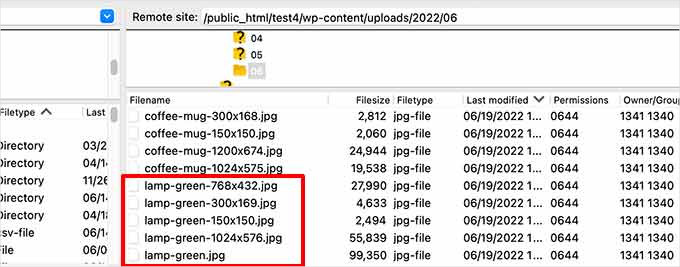
You can view and even adjust the default WordPress image sizes by visiting the Settings » Media page in the WordPress admin area.
Here, you’ll see three image sizes: thumbnail, medium, and large.

However, your WordPress theme may create its own additional image sizes and use them for different sections of your site.
These sizes will not be visible on the ‘Media’ screen, and the only way to view those additional sizes is by going to the ‘File Manager’ on your WordPress hosting account.
Then, you’ll want to navigate to the /wp-content/uploads/ folder and select any year folder there to browse. This will help you see all the various image sizes your WordPress site generates.
Now, let’s take a look at different areas of your website and what image sizes you should use in those areas.
What Image Sizes Should I Use in Blog Posts?
You should choose the image size for your blog posts based on your WordPress theme.
For instance, some WordPress themes come with a single-column layout, which allows you to use wider images.

Some other WordPress themes use multi-column layouts, which typically consist of a content area and a sidebar.
If you use this type of theme, you need to adjust the image width accordingly.

For most blogs, you can use the following image sizes:
- Single column layout: 1200×675 pixels
- Two-column layout: 680×382 pixels
Now, you might notice that many popular WordPress websites use the same image width for all their images inside an article. Please note that this is not a strict rule.
For instance, if you need to add a ‘Media and Text’ block, then you can adjust the image size accordingly. In the example below, we are using a portrait image next to some text.

Similarly, you may want to use square images for some situations.
However, don’t forget to make sure that the image dimensions have the same width and height, such as 300 x 300 pixels. For instance, here’s an example of square images used in a multi-column layout.
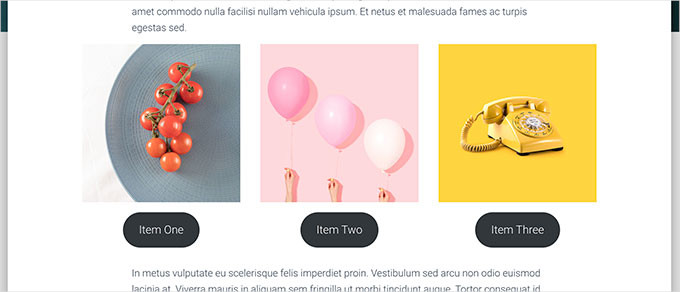
🧑💻 Pro Tip: If you need to display many images together, then creating a gallery is a much better approach. A gallery organizes your photos into a professional-looking grid that is easy for visitors to browse.
Envira Gallery is the best WordPress gallery plugin on the market. It allows you to create beautiful, mobile-friendly photo galleries with an easy drag-and-drop builder. Check out our full Envira Gallery review to learn more about it.
If you’re looking to create image sliders, then Soliloquy is a fantastic and fast-loading option that our team has used on various projects. Explore its features in our complete Soliloquy review.
What Image Sizes Should I Use for Featured Images?
There’s no one-size-fits-all, but a good starting point is 1200×628 pixels or 680×382 pixels for a 16:9 aspect ratio.
That said, featured images (also called post thumbnails) are controlled by your theme. Some themes may crop or stretch images. So it’s best to check your theme documentation or experiment with a few sizes to see what works best.
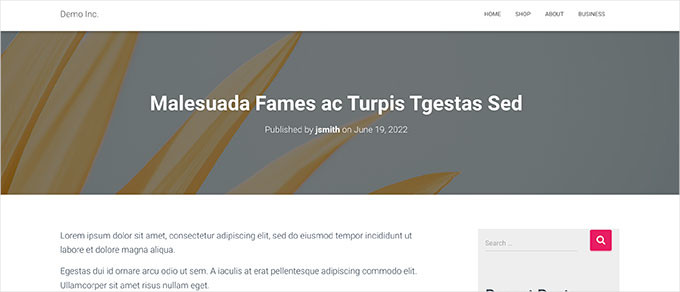
Featured images are important since your WordPress theme may use them in different areas of your website. They’re often the first thing your visitors see, so you’ll want to make a good first impression.
We recommend using larger images, which can look beautiful whether scaled down or used in wider modes.
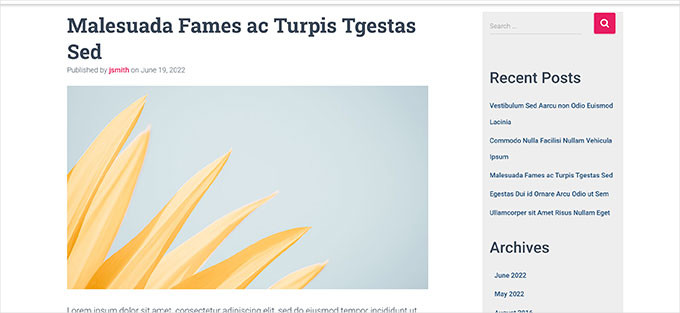
Similarly, if your WordPress theme uses square images for featured images, then we would recommend using images that are at least 600×600 pixels.
- For themes that use rectangular featured images: 1200×687 pixels
- For themes that use square featured images: 600×600 pixels
Your WordPress theme will generate additional sizes for featured images to use in different areas, such as the homepage, blog page, or archive pages.
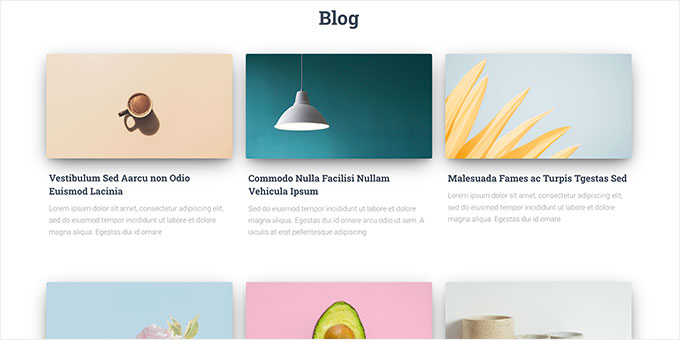
What Image Sizes Should I Use for Social Media?
Now, if your WordPress theme is using featured images that are 16:9 in aspect ratio, then you can also use them as social media images for X (formerly Twitter) and Facebook.
However, you’ll need to explicitly tell those platforms which image you want to display when someone shares an article from your website.
To do that, you’ll need the All in One SEO plugin for WordPress. It’s the best WordPress SEO plugin on the market and is used by over 3 million websites. This plugin can help you optimize your website for search engines and social media platforms.
At WPBeginner, we’re a big fan of AIOSEO ourselves and use it for a lot of tasks. They include managing our XML sitemaps, meta descriptions, title tags, and OpenGraph settings for Facebook and X. For more information about the plugin, see our complete AIOSEO review.
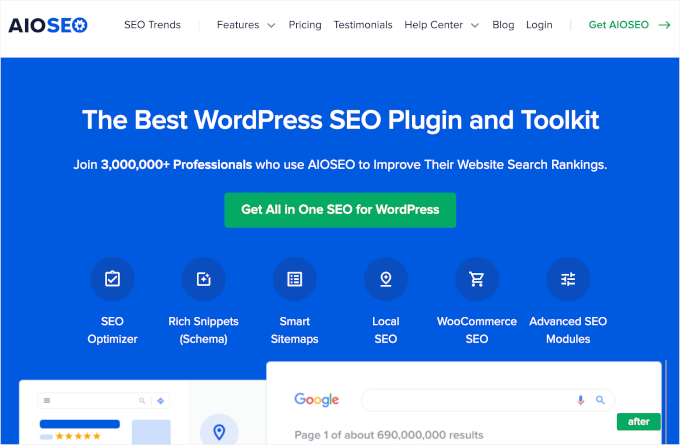
To get started, you need to install and activate the All in One SEO plugin. For more details, you can see our step-by-step guide on how to install a WordPress plugin.
📝 Note: On a tight budget? There’s also a free version of All in One SEO that you can try out before committing to the Pro version.
Upon activation, the plugin will launch the setup wizard. Simply follow the on-screen instructions to complete the process. You can also see our guide on how to set up All in One SEO for more detailed instructions.
After that, you need to visit the All in One SEO » Social Networks page and switch to the Facebook tab. From here, you can set ‘Featured Image’ as your default Open Graph image source.
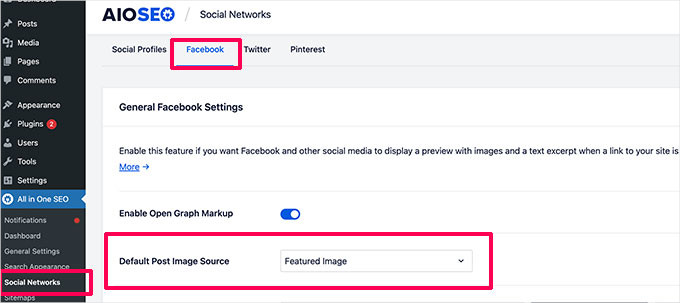
You can then switch to the X(Twitter) tab and do the same.
Don’t forget to click on the ‘Save Changes’ button to store your settings.
Now, if your WordPress theme uses images in a different size, then Facebook and Twitter may not be able to display those images properly.
In that case, you can provide social media platforms with a custom image.
Simply create an image with a 16:9 aspect ratio, which can be 1200×675 pixels or 680×382 pixels. Then, edit the post or page and scroll down to the ‘AIOSEO Settings’ section below the content editor.
From here, you’ll need to switch to the ‘Social’ tab and scroll down to the ‘Image Source’ field. From the drop-down menu, select ‘Custom Image’ and then upload your Facebook image.

Once done, you can repeat the process on the ‘Twitter’ tab as well.
Note that you’ll have to do this for all the articles you publish to ensure that social media uses the image you want them to use. For more social media image sizes, see our WordPress social media cheat sheet for beginners.
What Image Size Should I Use for My Website Logo in WordPress?
A good starting size for a WordPress logo is 300×200 pixels. However, the ideal size can vary depending on your theme.
Many WordPress themes will recommend a specific logo size during upload. For example, some may show a message suggesting the optimal dimensions.
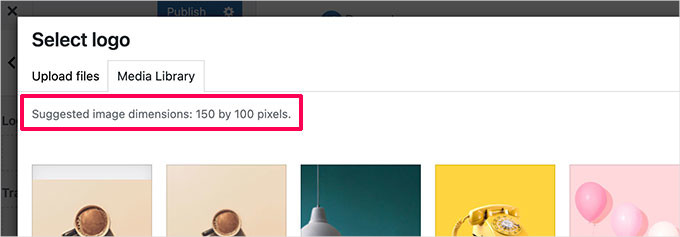
However, if you are using a newer WordPress theme with a full site editing feature, then you may not get a recommendation for logo image size.
In that case, we recommend uploading different styles and sizes to see what looks best for your brand. A logo image size of 300×200 pixels can be a good starting point.

Bonus Tip: Editing Images for Your WordPress Website
We understand that most WordPress users are not professional graphic designers. However, learning to use image editing software to scale image sizes for your website is a great skill to have, and it’s very easy to do so.
WordPress itself comes with some basic image editing tools. To use them, simply go to the Media » Library page and click on an image.
This will open the image in a popup, where you’ll see a button to edit the image.
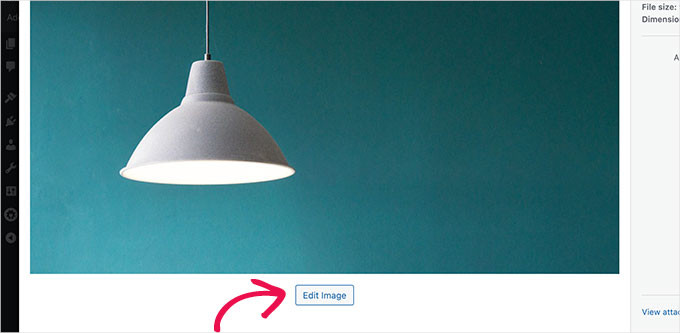
Once you do that, you should see the editing options.
The editing tools include basic image resizing, cropping, rotating, and flipping.
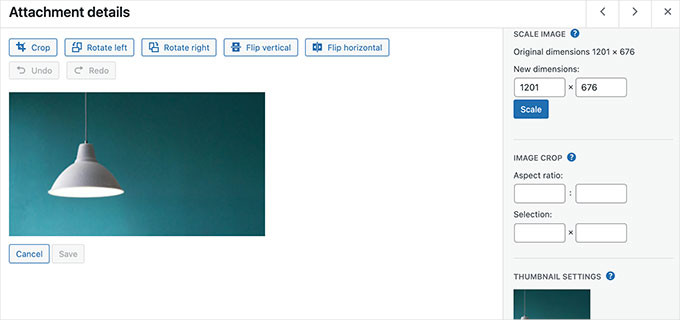
This basic image editing comes in handy if you need to quickly fix an image issue. However, it’s not the best way to edit your images daily.
Luckily, there are several free and inexpensive options that you can use:
- Canva – A free web-based image editing software. It also includes ready-made templates for website images, logos, social media images, and more.
- Pixlr – A freemium web-based image editing software. It can be used to resize images for your blog posts easily.
- Gimp – Free and open-source image editing software. This tool works as a native desktop app on Windows, Mac, and Linux. It can be used to resize images, add layers of text, edit photos, and more.
For more on this topic, you can see our guide on how to do basic image editing in WordPress.
Frequently Asked Questions About WordPress Image Sizes
Having helped thousands of users get their websites running smoothly, we’ve answered our fair share of questions about images. Here are some of the most common ones we hear.
What is the best image format: JPEG, PNG, or WebP?
The best format depends on the type of image. JPEGs are great for photographs with many colors because they offer good compression without a big drop in quality.
PNGs are ideal for graphics, logos, and illustrations with flat colors or transparent backgrounds. WebP is a modern format that provides excellent compression for both types of images, but you may need a plugin to serve them on your site.
Do I need a plugin for image optimization?
While you can optimize images manually before uploading, using a plugin can save you a lot of time. Image optimization plugins automatically compress your images to reduce file size without losing visual quality.
Many popular caching plugins, like WP Rocket, include image optimization features. This helps your pages load faster, which is great for both user experience and SEO.
What is the difference between image dimensions and file size?
Image dimensions are the width and height of an image, measured in pixels (e.g., 1200 x 675 pixels). These determine how large the image appears on the screen.
File size is the amount of storage space the image takes up, measured in kilobytes (KB) or megabytes (MB). Larger dimensions usually lead to a larger file size, which can slow down your site.
How can I find the correct image dimensions for my theme?
The easiest way is to check your theme’s documentation, which often specifies recommended image sizes.
If you can’t find it there, you can use your browser’s developer tools. Simply right-click on an image area on your site (like the content area) and select ‘Inspect.’ This will show you the exact dimensions of the container, giving you a target size to aim for.
Additional Resources on WordPress Images
We hope this guide helped you master WordPress image sizes. If you want to learn more, here are some other articles you may find helpful:
- How to Add Magnifying Zoom for Images in WordPress
- How to Add Captions to Featured Images in WordPress
- How to Use AI to Generate Images in WordPress
- How to Add SVG Image Files in WordPress
- Image Alt Text vs Image Title in WordPress
- How to Optimize Images for Web Performance without Losing Quality
- Best Places to Find Free Public Domain Images for Your Blog
- How to Fix Featured Image Not Showing in WordPress
- How to Fix Image Upload Issues in WordPress
If you liked this article, then please subscribe to our YouTube Channel for WordPress video tutorials. You can also find us on Twitter and Facebook.
